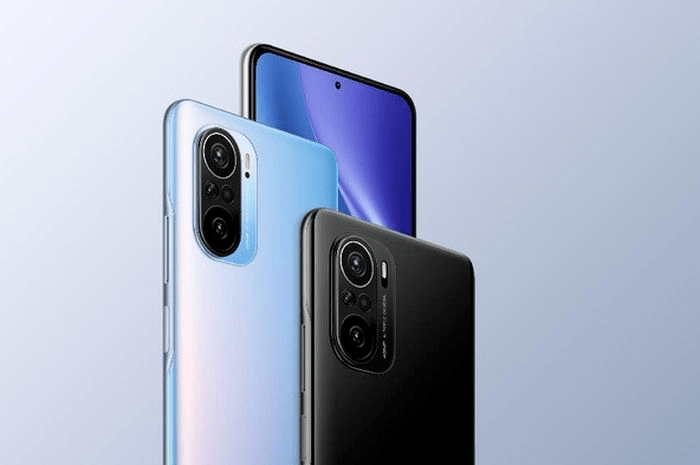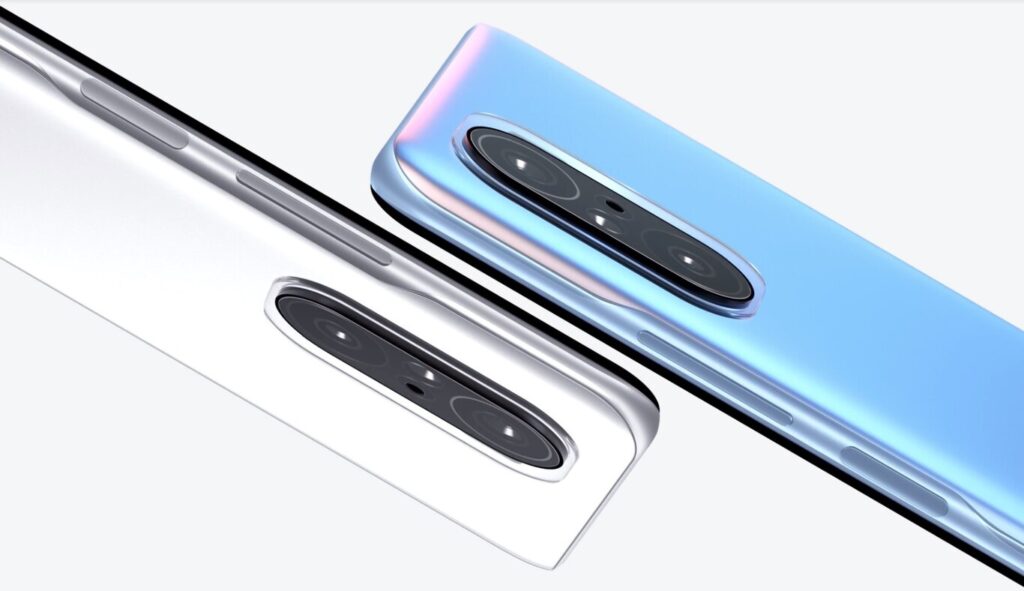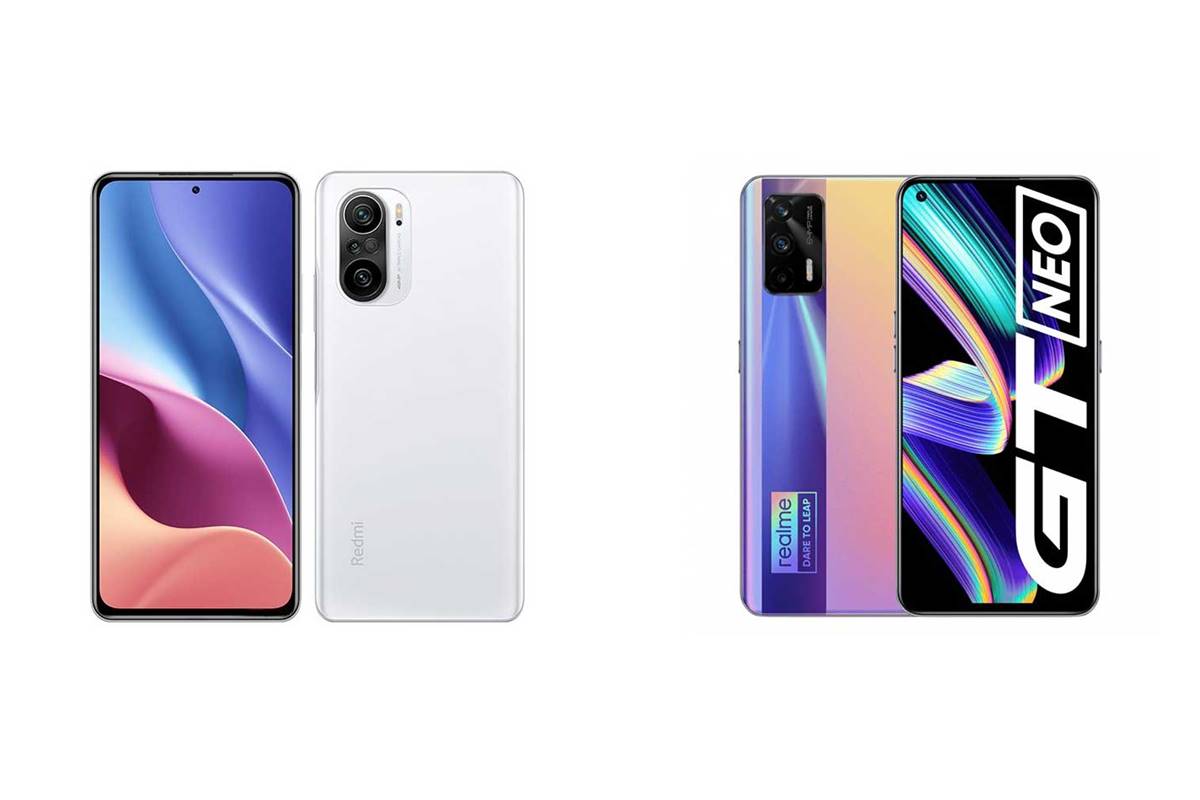Ever since MediaTek announced its Dimensity chipsets for the mobile platform, the market has changed quite significantly. Earlier, Qualcomm’s Snapdragon chipsets were the sole third-party chip manufacturers for flagship smartphones. No doubt, we had Exynos from Samsung and Kirin from Huawei, but the third-party region was solely taken over by Snapdragon. Not to forget that there were MediaTek’s Helio-powered phones but due to their inefficient process, they were overlooked by many. To regain, the marketplace, last year, MediaTek announced its Dimensity SoC to take on the higher-end Snapdragon SoCs. With over a year already, we have a range of Dimensity chips in the market starting from the budget segment to the flagship segment. Currently, the most powerful chipset from MediaTek, the Dimensity 1200 SoC is competing with the rival Snapdragon 888 and Snapdragon 870 chipsets. Today, the two shells powering the aforementioned SoCs are on the roam in the market, the Redmi K40 and Realme GT Neo. The Xiaomi Redmi K40 powers the Snapdragon 870, whereas, the Realme GT Neo fuels the MediaTek Dimensity 1200 flagship SoC. With two flagships of Chinese origin offering similarly-powered internals, it is a hectic task to choose one depending on your need. Today, in this article, we will compare the two flagship-grade smartphones(Redmi K40 vs Realme GT Neo) on paper and list down the significant differences between the two smartphones making you pick the best one for you.
Speaking of best, there’s no best device in the market. The specs speak for themselves and you pick the one that suits your needs. The one that does, could be the best device for you. Now, with breaking a sweat, let’s get right into the comparison.
Redmi K40 vs Realme GT Neo: The War of Two Chinese Flagship-Killers
Just like all our comparisons, we will start with the design and built, followed by cameras, and then the hardware. To keep it interesting, we’ll have an active comparison on the move.
Design and Built Quality
When it comes to design, both phones don’t disappoint us. The Redmi K40 impresses us with its unique camera module that adds to the looks of the handset. On the other hand, the Realme GT Neo tries to grab our attention with its dual-tone/vivid rear design. To be honest, the phone has a standard design but the color of the background and the foreground, plus the ‘Dare to Leap’ branding touts its looks.

Well, the phones look good but what are they made out of? Xiaomi has gone with a more premium solution of Glass back and fronts with plastic framing on the sides.
The Realme GT Neo on the other end has a polycarbonate built maintaining its matte look. Do note that the K40 has a Corning Gorilla Glass protection at the back as well as at the front.
Moving to the displays, the Realme GT Neo has a compact 6.43-inch punch-hole panel over the larger 6.67-inch punch-hole panel on the Redmi K40. Both the displays are a Super AMOLED panel with Full-HD+ resolution and 120Hz refresh rate.
Do note that the GT Neo has a side-punch-hole, whereas, the K40 has a center-punch-hole. The screens are fairly bright at 1300 nits with 409 PPI on GT Neo and 395 PP on the Redmi K40.
One major selling point of the Realme GT Neo has to be the in-display fingerprint scanner which the Redmi K40 misses out on. Instead, the K40 opts for a side-mounted fingerprint solution that is claimed to be fast and reliable.
Cameras on the Realme GT Neo and Xiaomi Redmi K40
If there’s one thing a layman would appreciate in a smartphone is evidently the cameras. Therefore, having a good camera system is as important has owning a camcorder or a DSLR, especially in 2021.
Getting straight to the point, the phones have a vertical camera module but the K40 shines with its unique placement of the sensors. It has a triple rear camera system where the single sensor is sandwiched between the two main lenses. Although it ticks the good looks, it doesn’t fair with the camera setup of the Realme GT Neo.

The Realme GT Neo owns a better triple-rear system with a 64MP primary lens, an 8MP ultra-wide-angle lens, and a 2MP macro sensor over the 48MP main lens, the same 8MP wide sensor, and a better 5MP macro lens. With that said, the choice remains simple, if a user wants to take macro photography to the next level, then you won’t go wrong with the GT Neo. But, if you are someone who wants a better overall camera system, at least on paper, then the K40 is for you.
One thing worth noting is that the Realme GT Neo’s primary lens is Sony’s IMX682 sensor, whereas, the Redmi K40 uses an IMX582 main sensor for the primary.
As for selfies, the Redmi K40 has a 20MP primary lens with support for 1080p videos at 30fps over the 16MP selfie shooter present on the Realme GT Neo. Interestingly, the GT Neo has the ability to record 4K videos at 60fps which the K40 can’t do as it is limited to 4K 30fps video.
Neither of the devices feature Optical Image Stabilization(OIS) as they solely rely on Electronic Image Stabilization(EIS).
Hardware and Software
Here we move towards the major difference between the two, the chipsets. On paper, the Realme GT Neo is fueled on an efficient MediaTek Dimensity 1200 chipset as compared to the Qualcomm Snapdragon 870 inside the Redmi K40.
For those who are unaware, the Dimensity 1200 is a much more efficient octa-core chipset as it is based on a 6nm process over the 7nm process of the Snapdragon 870. It means that the battery efficiency and the power consumption on the Dimensity 1200 will be better.
The chipset on both phones is paired with a base of 6GB of RAM and goes all the way up to 12GB of max RAM. The phones have a fast UFS 3.1 storage type with a base of 128GB memory in both handsets.

The 5G phones pack a similar battery cell with a 4,500mAh cell in the GT Neo as compared to the 4,520mAh battery in the Redmi K40. We believe that the battery on the GT Neo would last longer thanks to the efficient 6nm chipset under the roof. The GT Neo goes miles ahead with its 50W Rapid charging over the 33W fast charging solution on the K40.
As for software, the MIUI 12 is known for its feature-rich interface, whereas, the Realme UI is a custom skin for Vivo fans. We aren’t sure if ads run on these user interfaces but the deciding factor would mainly be the personal bias, therefore, we leave the software on you.
The Redmi has an IR blaster which the GT Neo lacks. Sadly, the 3.5mm audio jack is missing on the K40 but the GT Neo retains it.
Highlighting Differences between the Realme GT Neo and Xiaomi Redmi K40
| Redmi K40 | Realme GT Neo |
|---|---|
| Glass Built(Gorilla Glass 5 Protection) | Plastic Built |
| Larger 6.67-inch display | Compact 6.43-inch display |
| 48MP Sony IMX582 sensor | 64MP Sony IMX682 sensor |
| 4K video recording limited to 30fps | 4K video recording at 60fps |
| 20MP selfie shooter | 16MP selfie shooter |
| 7nm Snapdragon 870 | 6nm Dimensity 1200 |
| 33W Fast Charging | Faster 50W Rapid Charging |
| Side-facing fingerprint scanner | Under-display fingerprint scanner |
| MIUI 12 | Realme UI 2.0 |
| IR blaster | – |
| – | 3.5mm headphone jack |
| ~$310 | ~$274 |
If you are someone who wants a good display, looks, performance, and the additional Infrared sensor, then the Redmi K40/Poco F3 is a good choice for you. If better cameras, more efficient internals, fast charging support, and audio matter to you, then you won’t be better with anything other than the Realme GT Neo.
Editor’s Pick: IQOO 7 vs Xiaomi Mi 11X: Two Snapdragon 870 Beasts Go Head-to-Head
Stay tuned for more updates on smartphones, gadgets, leaks, rumors, and some exclusive content in the tech world.


Laal phool neela phool
Pranav’s website beautiful
K40 over Realme Gt anytime🙂❤️